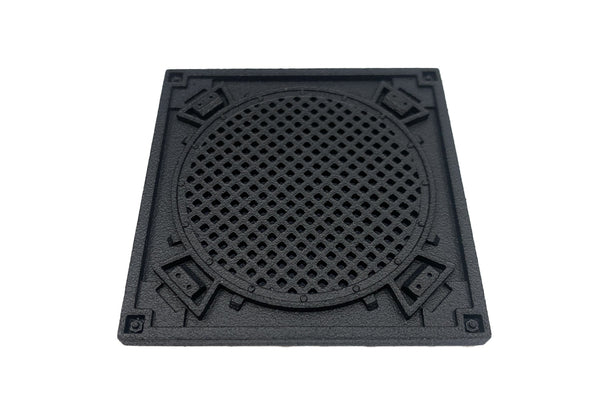Takom 1:35 British Mk.IV Male "Tadpole" w/Workable tracks
TAK02015
Sold Out
Takom 1:35 - British Mk IV Male "Tadpole" with workable tracks and wheels - Plastic model kit #02015
The Mark IV was a British tank of World War I issued in 1917. Derived from the world's first tank, the Mark I, the Mk.IV was considerably improved in both structure and armour, it was also easier to transport.
The Mark IV was introduced in two variants, a "Male" and a "Female". The Mk.IV Male was powered with three Lewis machine guns and two QF 6-pounder 6 cwt guns. The Female carried five machine guns, two of which were operated by the gun loaders.
Over a thousand Mk.IV-s were built in wartime, including Males, Females and utility vehicles, thus the series was the most produced British tank of WWI. It first saw combat at the Battle of Messines Ridge and continued to serve with British forces throughout the entire war.
During that period several attempts were made to improve the tank performance. In order to enhance its trench-crossing ability the Mk.IV was supplemented with the so-called "tadpole tail", an extension to its rear track horns. However, the tail lacked rigidity so the innovation was dropped. No Mk.IV "Tadpoles" were used on the battlefield.
The kit includes:
- 508 plastic parts
- 240 individual track links
- 22 photo etched parts
- 1x16 page instruction booklet
Related Items
Soviet Sniper WW2 1/16th scale
£45.00 GBP
Highly detailed 1/16th or 120mm scale miniature, capturing the uniform and equipment of a WW2 Soviet Sniper. The kit comes with three head configuration options, fur hat with ear flaps known as the 'Ushanka', a head with helmet (2 parts) and a head with a cap known as the 'Pilotka'.
This is ideal for a diorama or bust depicting Soviet Snipers such as Vasily Grigoryevich Zaitsev. Between 10 October 1942 and 17 December 1942, during the Battle of Stalingrad, he killed 225 enemy soldiers. Zaitsev became a celebrated figure during the war and later a Hero of the Soviet Union, and he remains lauded for his skills as a sniper.
Operation Frankton RMBPD Set - WWII Cockle Canoe + Royal Marines
£45.00 GBP
1:35 - Major Herbert George "Blondie" Hasler - Resin kit
Herbert George "Blondie" Hasler was a Lieutenant Colonel of the Royal Marines. In 1942, a 28-year-old Hasler planned and led Operation Frankton. The operation was a commando raid on Axis shipping in the French port of Bordeaux occupied by the Germans. The mission was to attach mines to the hulls of German cargo ships. Three of the five canoes were lost on the way to the port. The surviving crewmen including Hasler reached the port successfully, placed the mines and managed to drown four cargo ships. They then walked 100 miles to a French village where they met with members of the Resistance and started their journey back to England through Spain and Gibraltar. For this operation Hasler was awarded the Distinguished Service Order by King George VI.
One kayak was damaged while being deployed from the submarine, and it and its crew therefore could not take part in the mission. Only two of the 10 men who launched from the submarine survived the raid: Hasler, and his number two in the kayak, Bill Sparks. Of the other eight, six were executed by the Germans and two died from hypothermia.
This product is available in two scales, 1:35 and 1:24 and was painstakingly designed from scratch as a digital model.
The kit includes: 2 x miniatures (Blondie Hasler and Bill Sparks) in their folding Cockle Canoe named 'Catfish' made by Campaign Models (UK).
Now available, while stocks last.
Miniature Diorama Display Base
£9.50 GBP
This highly detailed Diorama base is ideal for mounting one or two figures on display. Small enough to be displayed easily, big enough to provide enough space to set the scene. More styles coming very soon!
Dimensions: 58mm x 58mm x 4mm
1:35 Resin Miniature WWII German Soldier Eastern Front
£15.00 GBP
A detailed single (1x) resin miniature in 1:35 scale, posed to be standing while smoking a cigarette. The kit consists of the following parts:
Head/torso
Helmet
Right arm with MP40
Left arm/hand
Left leg
Right leg
M1931 Bread Bag - with M1931 Field Flask and Mess tin combined
Ammunition Pouch
Spare MP40
Sidearm in holster













